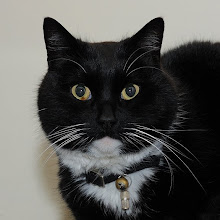Besides the fifteen infantry regiments a large contingent of cavalry formed part of the invasion force. The cavalry consisted of two regiments of dragoons, the Gardes du Corps and Regiment Gardes te Paard (Life Guards and Horse Guards, respectively), and 14 regiments of horse.
It should be noted that this latter number does not become apparent from literature directly. Het Staatsche Leger, Volume VI, pp. 126-128 gives a neat order of battle of the invasion force, and shows us 40 troops (called companies) of horse. In Het Staatsche Leger, Volume VII, pp. 426-428 another list is presented showing (Dutch) regiments that would stay in English pay and the regiments to return to Holland. Here 14 regiments of horse are shown: 9 in English pay with 27 troops between them, and 5 returning with the remaining 13 troops. Data presented here is based on this source. For more information, please see the Dutch Regiments website.
Gardes:
Gardes du Corps, the Life Guards which would stay in English pay until 1699.
Regiment Gardes te Paard, the Horse Guards commanded by Bentinck, the Earl of Portland which would be in English pay until 1699 as well.
Regiments of horse:
Regiment Waldeck, returned in 1689
Regiment Nassau - Saarbrücken (Usingen), returned in 1689
Regiment Ginkel would stay in English pay until 1697
Regiment Montpouillan, same as Ginkels
Regiment Obdam, returned in 1689
Regiment 's Gravenmoer which would stay in English pay until 1697
Regiment Flodrof, returned in 1689
Regiment Lippe stayed in English pay until 1697
Regiment Nassau - Zuylestein, also in English pay until 1697
Regiment Oyen, idem
Regiment Soppenbroek, idem
Regiment Heyden, returned in 1689 to Holland
Regiment Riedesel, in English pay until 1697
Regiment Schack, also in English pay until 1697
In Knoop: Krijgs en geschiedkundige beschouwingen over Willem den III reference is made to Regiment Kingma, whereas Oyen's is missing. However, Regiment Kingma was disbanded in June 1688. Probably Regiment Oyen took its place, but the author is not sure about that.
The regiments of dragoons:
Regiment Gardes Dragonders, stayed in English pay until 1698
Regiment Marwitz which would return to Holland in 1689.
Subscribe to:
Post Comments (Atom)




2 comments:
Is dit nu de definitieve lijst icl de opmerkingen van Han op dutchregiments?
Qua volwaardige regimenten is dit wel de lijst volgens mij. In een volgend artikel ga ik de rest behandelen. Zo bestond een-vijfde van de 21,000 uit Hugenoten, waarvan maar een deel binnen een regiment. De rest was vrijwillliger of supernumerair. Verder was er nog een handvol embryonale Engelse regimenten, en dus wat contingenten Zweden, Brandenburgers en andere Duitsers. De Nederlandse regimenten zorgden voor zo'n 15,000 man, en 6,000 voor de rest (inclusief een deel artillerie, genie en commissariaat) klinkt wel plausibel.
De opmerking van Han dat subsidie regimenten (uit Brandenburg, Zweden, etc) ook daadwerkelijk deel uitmaakten van het expeditieleger heb ik nergens terug kunnen vinden (niet in Troost, niet in van der Kuijl). Wel steeds dat deze Brandenburgse, Zweedse en overige Duitse regimenten juist de plaats in diverse garnizoenssteden innamen van Nederlandse regimenten die naar Engeland gingen.
Dus mijn oorspronkelijke lijst was redelijk correct al. (Tenzij ik ergens overheen heb gelezen....)
Post a Comment